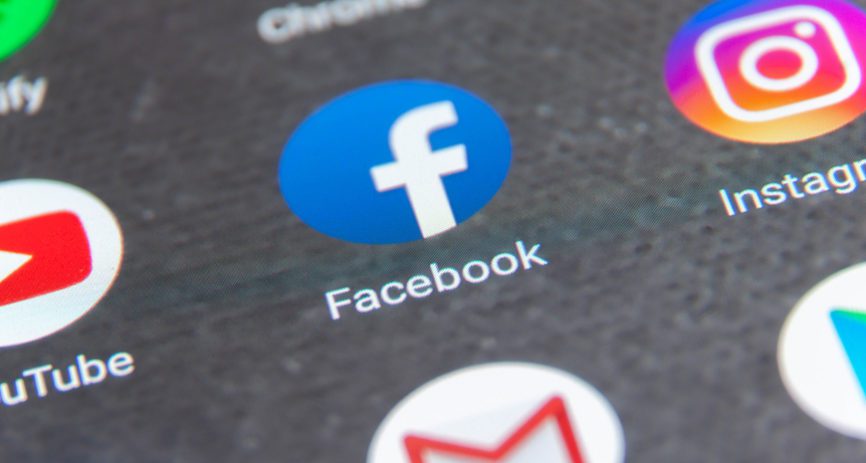
How to handle social media accounts of deceased loved ones
Have you ever been browsing social media and come across the social media account of a deceased family member? It’s a jarring experience that can stop you mid-scroll. But besides being a ghostly reminder to friends and family, social media accounts of the deceased can also pose a security threat.
Scammers often troll newspaper obituaries to collect information about a deceased person, and then they find additional personal information on social media accounts. They can then use that information to steal the deceased’s identity. Each year, identity thieves steal the identities of 2.5 million deceased Americans to open credit cards, apply for loans, get cell phones and more.1
Additionally, scammers often hack social media accounts of the deceased to acquire any linked credit card information. If you are managing the final affairs of a loved one, it’s important to manage your loved one’s digital footprint to help protect his/her identity. Here is how to do that on the top social media websites today:
On Facebook, there are two options for a deceased person’s account.
The first option is to memorialize the account. When an account is memorialized, the word “Remembering” will be shown next to the person’s name on their profile. Depending on privacy settings, friends and family can use the page to gather and share memories about the deceased. No one can log in to a memorialized account, which means it’s secure. Learn more about memorialized accounts here.
The second option is to delete the deceased’s account. To remove your loved one’s account, you’ll need to provide documentation proving you’re an immediate family member or executor of the account holder. According to Facebook, the fastest way to do this is to provide a scan or photo of your loved one’s death certificate.
If you don’t have a death certificate, you’ll need to provide the following proof of authority:
Submit one of the following to provide proof of authority:
- Power of attorney
- Birth certificate
- Last will and testament
- Estate letter
AND submit one of the following to provide proof that your loved one has passed away:
- Obituary
- Memorial card
Facebook asks that when providing documentation, please cover up any personal information they don’t need to fulfill your request, such as a Social Security number. Learn more about removing a deceased family member’s Facebook account here.
Instagram also allows you to either memorialize or remove a deceased person’s account.
When you memorialize an Instagram account, no one can log in to it. The account will appear the same as it did before it was memorialized, and no one will be able to make changes to any of the account’s existing posts or information. To memorialize an Instagram account, you’ll need to provide proof of death, such as a URL to an obituary or an uploaded photo of a newspaper obituary. Learn more about memorializing an Instagram account here.
To remove a deceased’s Instagram account, you’ll need to prove that you’re an immediate family member of the deceased by providing the deceased person’s birth certificate, the deceased person’s death certificate, or proof of authority under local law that you’re the lawful representative of the deceased person, or his/her estate. Learn more about removing a deceased person’s Instagram account here.
Twitter allows immediate family members, or authorized persons, to deactivate and remove a deceased’s account.
In order to remove a deceased user’s account, you must first submit a request. Twitter will then email you with instructions. You’ll need to provide information about the deceased, a copy of your ID, and a copy of your loved one’s death certificate. Learn more about deactivating a loved one’s Twitter account here.
LinkedIn will help you remove a deceased member’s profile when you submit this form. You’ll need to provide information about your loved one, the URL to their profile, your relationship to them, your loved one’s email address, the date they passed away, a link to their obituary, and the company they most recently worked at. Learn more about removing a loved one’s LinkedIn account here.
Snapchat
Snapchat will delete the account of a deceased loved one for you if you submit this form and provide a copy of the death certificate.
The best way to remove your deceased loved one’s Pinterest account is to email care@pinterest.com. You’ll need to provide your information, as well as the name, email address, and username of the deceased. You’ll also need to send Pinterest proof of death, such as a death certificate, obituary URL, or newspaper obituary scan, as well as proof of relationship, such as marriage certificate or proof that you’re named on the obituary.
Planning ahead…
Let your loved ones know, in writing, what you want. Do you want everything deleted—or do you want your pages to live on? Leave specific instructions in writing, including login credentials, for the trusted loved one who you want managing the process. Some platforms even provide planning tools for you to utilize, such as Facebook’s legacy contact and Google’s inactive account manager.
Looking for more information?
Looking for more information about managing the final affairs of a loved one? Check out our helpful post, Things to do when a loved one dies.
1Stop Fraud Colorado, Identity Theft After Death, https://www.stopfraudcolorado.gov/fraud-center/identity-theft/identity-theft-after-death.html, accessed 2019.
